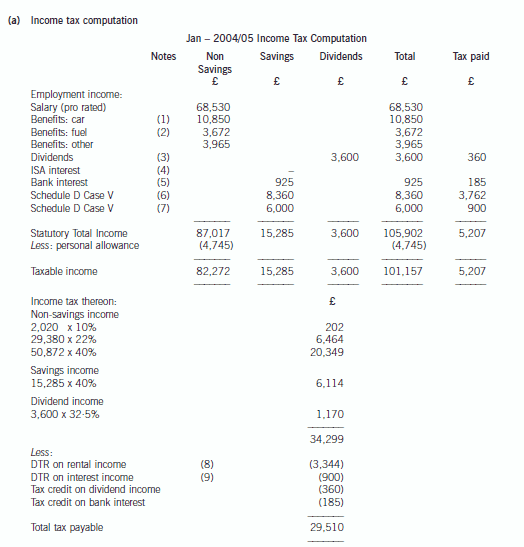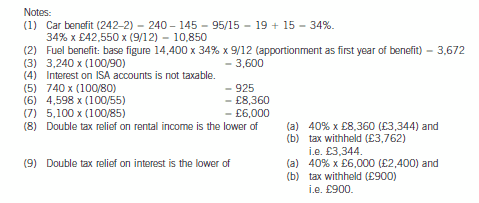浙江省2021年ACCA考试报名时间
发布时间:2021-01-13
最近有很多浙江地区的小伙伴咨询2021年ACCA考试报名的信息,接下来就和51题库考试学习网一起去看看吧。
2021年3月ACCA所有报名时间如下:
提前报名时间:2020年11月16日(目前已截止)
常规报名截止时间:2021年02月01日
后期报名截止时间:2021年02月08日
2021年6月ACCA所有报名时间如下:
提前报名时间:2020年11月10日(目前已截止)
常规报名截止时间:2021年04月26日
后期报名截止时间:2021年5月3日
ACCA考试报名条件如下所示:
1)凡具有教育部承认的大专以上学历,即可报名成为ACCA的正式学员;
2)教育部认可的高等院校在校生,顺利完成大一的课程考试,即可报名成为ACCA的正式学员;
3)未符合1、2项报名资格的16周岁以上的申请者,也可以先申请参加FIA(Foundations in Accountancy)基础财务资格考试。在完成基础商业会计(FAB)、基础管理会计(FMA)、基础财务会计(FFA)3门课程,并完成ACCA基础职业模块,可获得ACCA商业会计师资格证书(Diploma in Accounting and Business),资格证书后可豁免ACCAF1-F3三门课程的考试,直接进入技能课程的考试。
注册报名ACCA所需材料如下所示:
(一)在校学生所需准备的ACCA注册材料
1. 中英文在校证明(原件)
2. 中英文成绩单(可复印加盖所在学校或学校教务部门公章)
3. 中英文个人身份证件或护照(复印件加盖所在学校或学校教务部门公章)
4. 2寸彩色护照用证件照一张
5. 用于支付注册费用的国际双币信用卡或国际汇票(推荐使用Visa)
(二)非在校学生所需准备的注册资料(符合学历要求)
1. 中英文个人身份证件或护照(复印件加盖第三方章)
2. 中英文学历证明(复印件加盖第三方章)
3. 2寸彩色护照用证件照一张
4. 用于支付注册费用的国际双币信用卡或国际汇票(推荐使用Visa)
(三)非在校学生所需准备的注册资料(不符合学历要求-FIA形式)
1. 中英文个人身份证件或护照(复印件加盖第三方章)
2. 2寸彩色护照用证件照一张
3. 用于支付注册费用的国际双币信用卡或国际汇票(推荐使用Visa)
以上是ACCA考试报名的全部内容,希望可以帮到大家!51题库考试学习网在此预祝大家都能取得优异成绩!
下面小编为大家准备了 ACCA考试 的相关考题,供大家学习参考。
4 All organisations require trained employees. However, training can take many forms, some of which are internal to the organisation.
Required:
Explain what is meant by the terms:
(a) Computer based training. (3 marks)
4 All organisations need appropriately trained employees. Due to the nature of modern business, especially the professions, much of this training is internal and often on a one to one basis. Accountants as managers should therefore be able to understand the different approaches to training and which of them is the most appropriate and cost effective for the training requirements of the organisation.
(a) Computer based training can be inexpensive and is based upon user friendly interactive computer programs designed to enable trainees to train on their own and at their own pace.
(b) Using the information provided, state the financial statement risks arising and justify an appropriate audit
approach for Indigo Co for the year ending 31 December 2005. (14 marks)
(b) Financial statement risks
Assets
■ There is a very high risk that inventory could be materially overstated in the balance sheet (thereby overstating profit)
because:
? there is a high volume of metals (hence material);
? valuable metals are made more portable;
? subsidy gives an incentive to overstate purchases (and hence inventory);
? inventory may not exist due to lack of physical controls (e.g. aluminium can blow away);
? scrap metal in the stockyard may have zero net realisable value (e.g. iron is rusty and slow-moving);
? quantities per counts not attended by an auditor have increased by a third.
■ Inventory could be otherwise misstated (over or under) due to:
? the weighbridge being inaccurate;
? metal qualities being estimated;
? different metals being mixed up; and
? the lack of an independent expert to identify/measure/value metals.
■ Tangible non-current assets are understated as the parts of the furnaces that require replacement (the linings) are not
capitalised (and depreciated) as separate items but treated as repairs/maintenance/renewals and expensed.
■ Cash may be understated due to incomplete recording of sales.
■ Recorded cash will be overstated if it does not exist (e.g. if it has been stolen).
■ Trade receivables may be understated if cash receipts from credit customers have been misappropriated.
Liabilities
■ The provision for the replacement of the furnace linings is overstated by the amount provided in the current and previous
year (i.e. in its entirety).
Tutorial note: Last replacement was two years ago.
Income statement
■ Revenue will be understated in respect of unrecorded cash sales of salvaged metals and ‘clinker’.
■ Scrap metal purchases (for cash) are at risk of overstatement:
? to inflate the 15% subsidy;
? to conceal misappropriated cash.
■ The income subsidy will be overstated if quantities purchased are overstated and/or overvalued (on the quarterly returns)
to obtain the amount of the subsidy.
■ Cash receipts/payments that were recorded only in the cash book in November are at risk of being unrecorded (in the
absence of cash book postings for November), especially if they are of a ‘one-off’ nature.
Tutorial note: Cash purchases of scrap and sales of salvaged metal should be recorded elsewhere (i.e. in the manual
inventory records). However, a one-off expense (of a capital or revenue nature) could be omitted in the absence of
another record.
■ Expenditure is overstated in respect of the 25% provision for replacing the furnace linings. However, as depreciation
will be similarly understated (as the furnace linings have not been capitalised) there is no risk of material misstatement
to the income statement overall.
Disclosure risk
■ A going concern (‘failure’) risk may arise through the loss of:
? sales revenue (e.g. through misappropriation of salvaged metals and/or cash);
? the subsidy (e.g. if returns are prepared fraudulently);
? cash (e.g. if material amounts stolen).
Any significant doubts about going concern must be suitably disclosed in the notes to the financial statements.
Disclosure risk arises if the requirements of IAS 1 ‘Presentation of Financial Statements’ are not met.
■ Disclosure risk arises if contingent liabilities in connection with the dumping of ‘clinker’ (e.g. for fines and penalties) are
not adequately disclosed in accordance with IAS 37 ‘Provisions, Contingent Liabilities and Contingent Assets’.
Appropriate audit approach
Tutorial note: In explaining why AN audit approach is appropriate for Indigo it can be relevant to comment on the
unsuitability of other approaches.
■ A risk-based approach is suitable because:
? inherent risk is high at the entity and financial assertion levels;
? material errors are likely to arise in inventory where a high degree of subjectivity will be involved (regarding quality
of metals, quantities, net realisable value, etc);
? it directs the audit effort to inventory, purchases, income (sales and subsidy) and other risk areas (e.g. contingent
liabilities).
■ A systems-based/compliance approach is not suited to the risk areas identified because controls are lacking/ineffective
(e.g. over inventory and cash). Also, as the audit appointment was not more than three months ago and no interim
audit has been conducted (and the balance sheet date is only three weeks away) testing controls is likely to be less
efficient than a substantive approach.
■ A detailed substantive/balance sheet approach would be suitable to direct audit effort to the appropriate valuation of
assets (and liabilities) existing at balance sheet date. Principal audit work would include:
? attendance at a full physical inventory count at 31 December 2005;
? verifying cash at bank (through bank confirmation and reconciliation) and in hand (through physical count);
? confirming the accuracy of the quarterly returns to the local authority.
■ A cyclical approach/directional testing is unlikely to be suitable as cycles are incomplete. For example the purchases
cycle for metals is ‘purchase/cash’ rather than ‘purchase/payable/cash’ and there is no independent third party evidence
to compensate for that which would be available if there were trade payables (i.e. suppliers’ statements). Also the cycles
are inextricably inter-related to cash and inventory – amounts of which are subject to high inherent risk.
■ Analytical procedures may be of limited use for substantive purposes. Factors restricting the use of substantive analytical
procedures include:
? fluctuating margins (e.g. as many factors will influence the price at which scrap is purchased and subsequently
sold, when salvaged, sometime later);
? a lack of reliable/historic information on which to make comparisons.
(ii) A proposal which will increase the after tax proceeds from the sale of the Snapper plc loan stock and a
reasoned recommendation of a more appropriate form. of external finance. (3 marks)
(ii) Proposal to increase the after tax proceeds from the sale of the loan stock
AS should delay the sale of the loan stock until after 5 April 2008. The gain made at the time of the takeover would
then crystallise in 2008/09 and would be covered by the annual exemption for that year. The net proceeds would be
increased by the capital gains tax saved of £3,446 (£8,616 x 40%).
More appropriate forms of external finance
A bank overdraft is not the most appropriate form. of long term business finance. This is because the bank can demand
repayment of the overdraft at any time and the rates of interest charged are fairly high.
AS should seek long term finance for his long term business needs, for example a bank loan secured on the theatre, and
use the bank overdraft to finance the working capital required on a day-to-day basis.
2 Assume that today’s date is 1 July 2005.
Jan is aged 45 and single. He is of Danish domicile but has been working in the United Kingdom since 1 May 2004
and intends to remain in the UK for the medium to long term. Although Jan worked briefly in the UK in 1986, he
has forgotten how UK taxation works and needs some assistance before preparing his UK income tax return.
Jan’s salary from 1 May 2004 was £74,760 per annum. Jan also has a company car – a Jaguar XJ8 with a list price
of £42,550 including extras, and CO2 emissions of 242g/km. The car was available to him from 1 July 2004. Free
petrol is provided by the company. Jan has other taxable benefits amounting to £3,965.
Jan’s other 2004/05 income comprises:
£
Dividend income from UK companies (cash received) 3,240
Interest received on an ISA account 230
Interest received on a UK bank account 740
Interest remitted from an offshore account (net of 15% withholding tax) 5,100
Income remitted from a villa in Portugal (net of 45% withholding tax) 4,598
The total interest arising on the offshore account was £9,000 (gross). In addition, Jan has not remitted other
Portuguese rental income arising in the year, totalling a further £1,500 (gross).
Jan informs you that his employer is thinking of providing him with rented accommodation while he looks for a house
to buy. The accommodation would be a two bedroom flat, valued at £155,000 with an annual value of £6,000. It
would be made available from 6 August 2005. The company will pay the rent of £600 per month for the first six
months. All other bills will be paid by Jan.
Jan also informs you that he has 25,000 ordinary shares in Gilet Ltd (‘Gilet’), an unquoted UK trading company. He
has held these shares since August 1986 when he bought 2,500 shares at £4.07 per share. In January 1994, a
bonus issue gave each shareholder nine shares for each ordinary share held. In the last week all Gilet’s shareholders
have received an offer from Jumper plc (‘Jumper’) who wishes to acquire the shares. Jumper has offered the following:
– 3 shares in Jumper (currently trading at £3.55 per share) for every 5 shares in Gilet, and
– 25p cash per share
Required:
(a) Calculate Jan’s 2004/05 income tax (IT) payable. (11 marks)


声明:本文内容由互联网用户自发贡献自行上传,本网站不拥有所有权,未作人工编辑处理,也不承担相关法律责任。如果您发现有涉嫌版权的内容,欢迎发送邮件至:contact@51tk.com 进行举报,并提供相关证据,工作人员会在5个工作日内联系你,一经查实,本站将立刻删除涉嫌侵权内容。
- 2020-01-09
- 2020-09-03
- 2020-01-10
- 2020-01-10
- 2020-01-08
- 2020-01-09
- 2020-01-29
- 2021-04-08
- 2020-02-11
- 2020-04-15
- 2019-12-29
- 2020-05-01
- 2020-05-20
- 2020-01-10
- 2019-10-10
- 2020-01-09
- 2020-01-09
- 2021-01-21
- 2020-09-03
- 2020-08-13
- 2020-01-09
- 2020-01-09
- 2020-01-09
- 2020-02-27
- 2020-01-09
- 2020-01-10
- 2020-05-08
- 2020-09-03
- 2021-01-16
- 2020-01-09